Syn.: Dendropogon usneoides (L.) Raf., Renealmia usneoides L., Strepsia usneoides (L.) Nutt. ex Steud., Tillandsia crinita Willd. ex Beer, Tillandsia filiformis Lodd. ex Schult. et Schult. f., Tillandsia trichoides Kunth
Family: Bromeliaceae Juss.
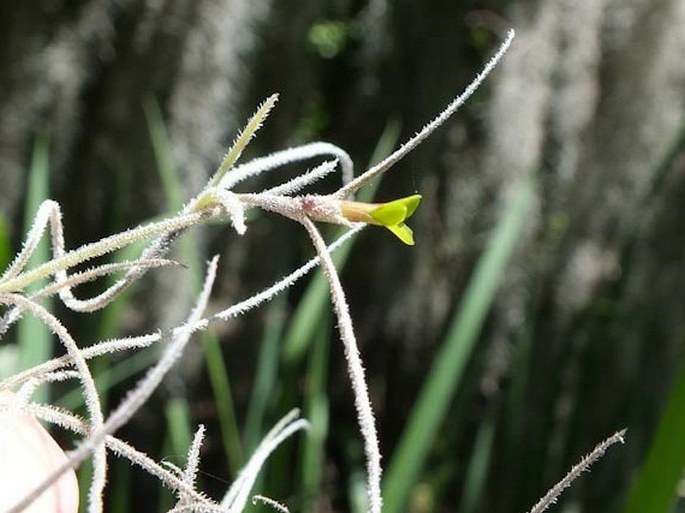
Distribution: Species of tropical and temperate areas of American continents. In US from North Carolina right through the coastal states to Texas, Central America and Caribbean islands and through South America to Argentina, Chile, Paraguay and Uruguay.
Ecology: Epiphytic plant, one of the true atmospheric plants, growing attached to the tree branches, rocks and manmade objects like fences, telephone wires, communication towers, at elevations from 0–300 m. It requires high humidity and air movement. Blooms in summer.
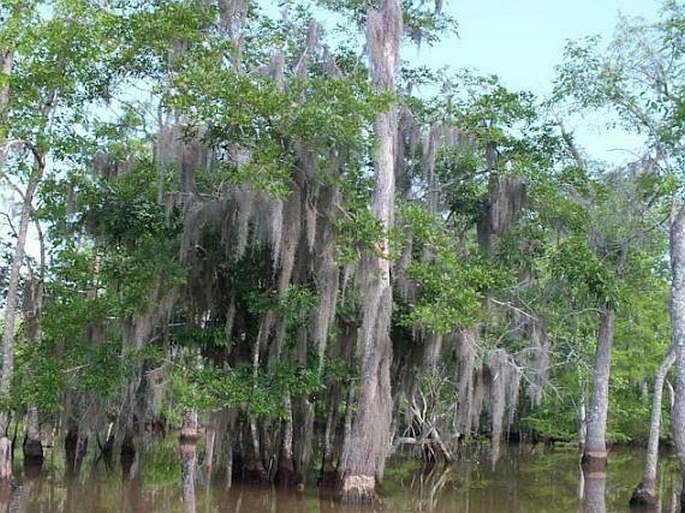
Description: Epiphytic bromeliad without roots, growing in hanging festoons up to 3 m long. Leaves 4–8, 2-ranked, twisted or contorted, densely covered with silver-grey water retaining trichomes, 1.5–5 cm long, 1–2 mm wide, margins involute to almost tubular, apex acute. Peduncle very short, almost non-detectable, usually pendent; floral bracts enveloping base of the flower, covered in trichomes; flower single, sessile; sepals free, ovate, 6–7 mm, veined, brownish yellow, smooth surface; corolla spreading, yellow-green, elliptic, 1 cm; stamens and stigma erect. Fruit is an elongated capsule, 2.5 cm, seeds with pappi.
Note: This plant, as all bromeliads, is a monocarpic plant which sprouts offshoots from axils of its few leaves before it dies and the growth of these enormous festoons is a purely vegetative, clonal reproduction.
The festoons have history of use for decorative purposes and even today it is used as packing material.
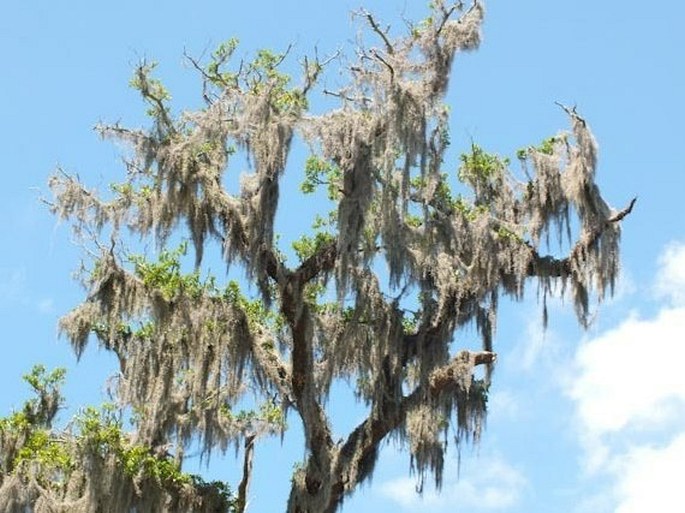
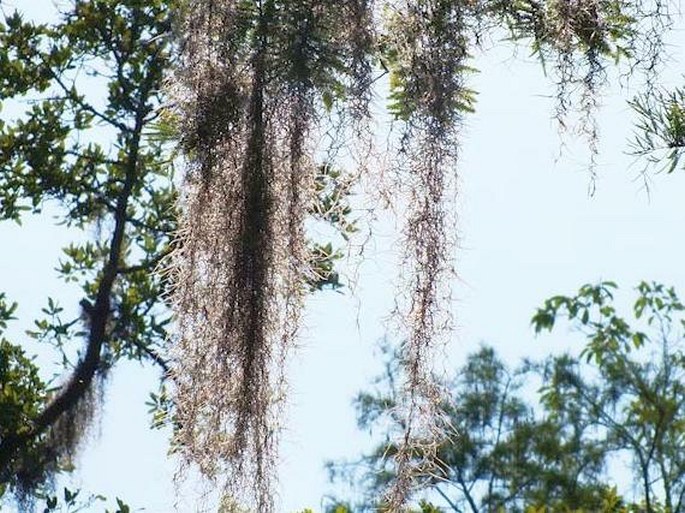
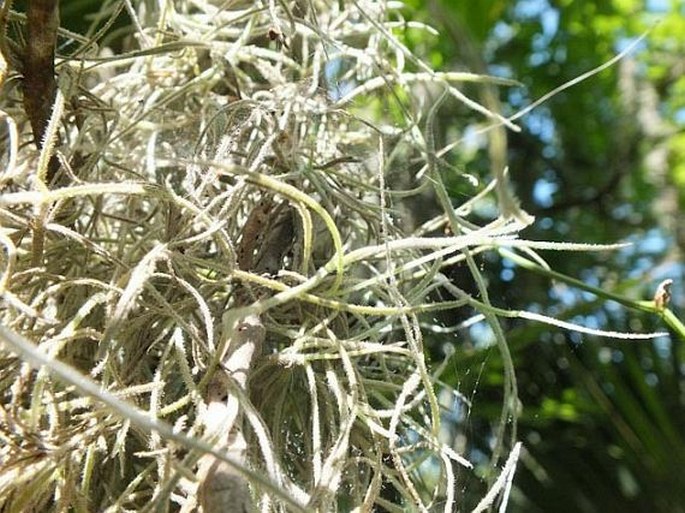
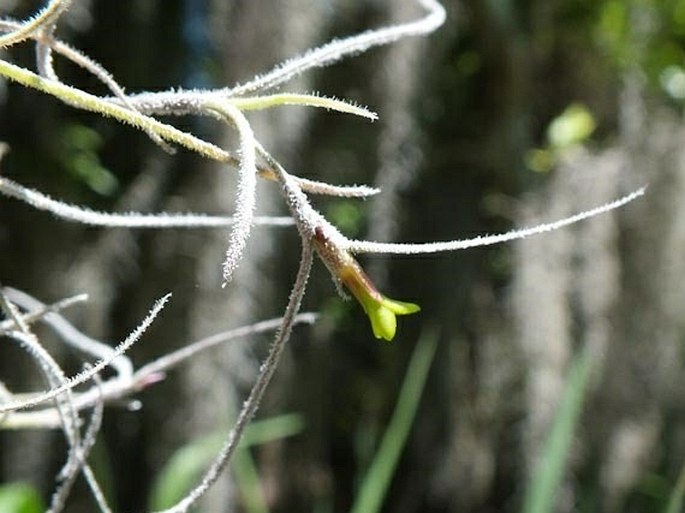
These images were taken in USA, southern Louisiana (May 2014).


